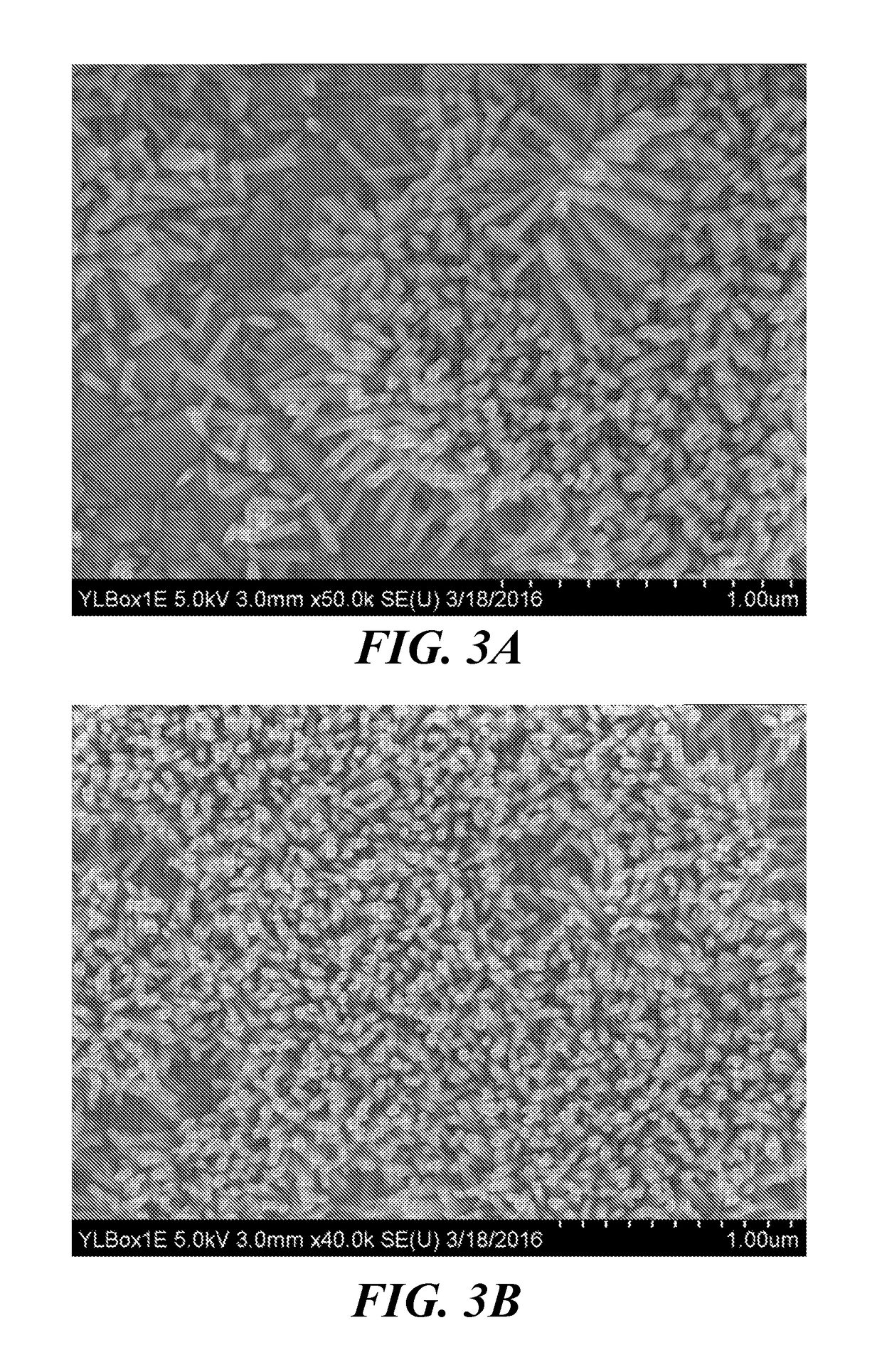Self-Powered Bone Growth Stimulator
- Summary
- Abstract
- Description
- Claims
- Application Information
AI Technical Summary
Benefits of technology
Problems solved by technology
Method used
Image
Examples
example 1
on of Titania Nanotubes
[0034]Titanium foils (99.5% Ti, 0.25 mm thick, annealed) and platinum meshes were purchased from Alfa Aesar. Other chemicals were purchased from Sigma-Aldrich or Fisher Scientific. Ti foils were cut into 2.5 cm×2.5 cm squares and were cleaned with acetone, 70% ethanol, and deionized water (Milli-Q water) separately, each for 15 minutes. Then, the cleaned Ti foils were etched for 1 minute with a solution containing nitric acid solution (1.5% by weight) and hydrofluoric acid (1.5% by weight) to remove the naturally occurring oxide layer.
[0035]The Ti foils were then anodized using a two-electrode configuration, with a Pt mesh serving as the cathode and a Ti foil serving as the anode. One side of each of the Ti and Pt electrodes was immersed in an electrolyte solution consisting of 1% HF, while the other side of each electrode was connected to a DC power supply through copper wires. Anodization proceeded for 10 minutes at 20 V, during which titania nanotubes were ...
example 2
of ZnO Nanowires on Titania Nanotube Substrates
[0036]Zinc oxide nanowires were synthesized on anodized titanium substrates of Example 1 by two different methods. For either method, the substrate first was ultrasonically cleaned in acetone followed by ethanol and de-ionized water for five minutes in each solvent at room temperature, followed by drying under a nitrogen stream for 5 minutes at room temperature.
[0037]Method 1
[0038]Commercial zinc oxide nanoparticles (Nanophase Technologies Inc.) were seeded onto a substrate surface containing titania nanotubes via spin coating of a well agitated ethanolic solution containing 10 mM of zinc acetate dihydrate and polyvinylpyrrolidone. Following the spin coating process, the seeded substrate was annealed in air within a furnace at 200° C. for 120 minutes.
[0039]Method 2
[0040]Zinc carbonate nanoparticles were precipitated onto a titania substrate containing titania nanotubes by combining 1M zinc nitrate and 1M ammonium carbonate in an aqueous...
example 3
ZnO Nanowire-Generated Potential on Osteoblast Growth
[0042]Osteoblasts were grown on substrates (either pure Ti, anodized Ti with nanotubes, or anodized Ti with ZnO nanowires grown out of the titania nanotubes) for up to 5 days with mechanical stimulation. Mechanical stimulation was applied to the piezoelectric ZnO nanowires via an ADMET mechanical testing system to generate an electrical potential, whose influence on cell proliferation was tested.
[0043]Human osteoblasts obtained from PromoCell, Heidelberg, Germany, were used at population numbers less than ten for all cell experiments. Cells were cultured in Eagle's Minimum Essential Medium (EMEM; ATCC) supplemented with 10% fetal bovine serum (FBS; Sigma-Aldrich) and 1% penicillin / streptomycin (P / S; Gibco) or Dulbecco's Modified Eagle Medium (DMEM; ATCC) supplemented with 10% FBS and 1% P / S. The cells were seeded onto the ZnO nanowire / TiO2 nanotube substrates at a density of 5000 cells / cm2 and were allowed to grow for 1, 3, or 5 d...
PUM
 Login to View More
Login to View More Abstract
Description
Claims
Application Information
 Login to View More
Login to View More - R&D
- Intellectual Property
- Life Sciences
- Materials
- Tech Scout
- Unparalleled Data Quality
- Higher Quality Content
- 60% Fewer Hallucinations
Browse by: Latest US Patents, China's latest patents, Technical Efficacy Thesaurus, Application Domain, Technology Topic, Popular Technical Reports.
© 2025 PatSnap. All rights reserved.Legal|Privacy policy|Modern Slavery Act Transparency Statement|Sitemap|About US| Contact US: help@patsnap.com



